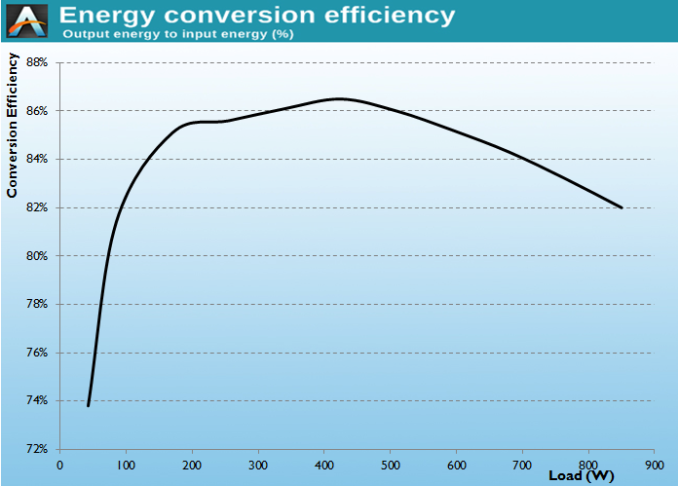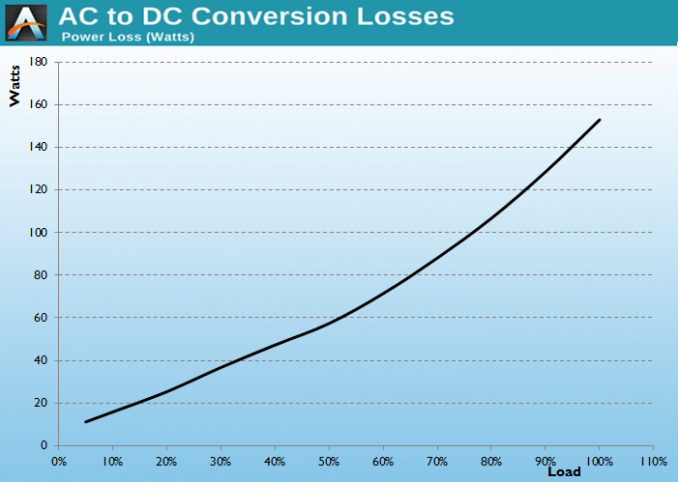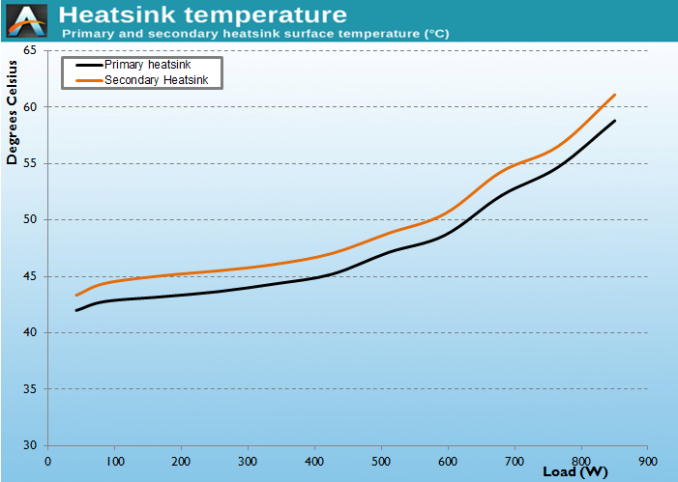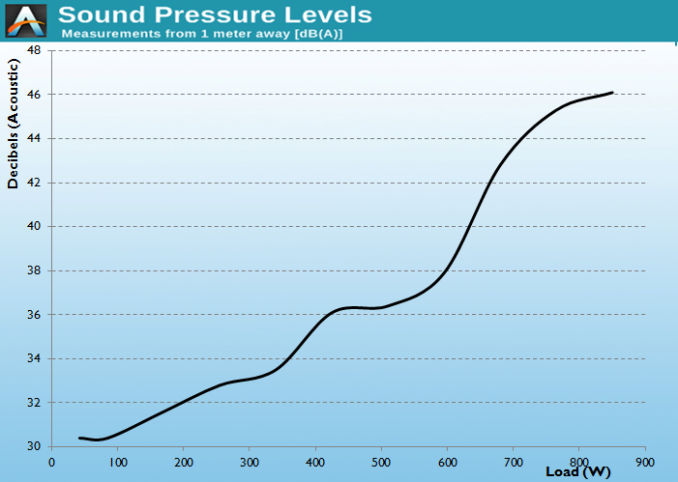The Rosewill Hive 850W PSU Review
by E. Fylladitakis on July 28, 2015 9:00 AM EST- Posted in
- PSUs
- Cases/Cooling/PSUs
- Rosewill
- 850W
Cold Test Results
For the testing of PSUs, we are using high precision electronic loads with a maximum power draw of 2700 Watts, a Rigol DS5042M 40 MHz oscilloscope, an Extech 380803 power analyzer, two high precision UNI-T UT-325 digital thermometers, an Extech HD600 SPL meter, a self-designed hotbox and various other bits and parts. For a thorough explanation of our testing methodology and more details on our equipment, please refer to our How We Test PSUs - 2014 Pipeline post.
The Rosewill Hive 850W displays very high efficiency levels under low to medium loading. It would very easily receive a better efficiency certification as well if not for the sharp efficiency drop above an output of 500 Watts. It manages an average efficiency within the nominal load range (20% to 100% of the unit's capacity) of 84.9% and a maximum of 86.5% when operating at exactly 50% load. However, the efficiency drops significantly at high loads, dropping all the way down to 82% at 100% load, preventing the platform from reaching higher efficiency certifications.
Due to the significant efficiency degradation at higher loads, the Hive 850W PSU displays a highly uneven temperature increase across the load range. It is rather cool and quiet at low to medium loads, with the fan maintaining very comfortable noise levels. However as the load increases, the lower efficiency generates heavy thermal losses and the speed of the fan increases rather abruptly, reaching what I feel are aggravating noise levels if the PSU is operating near its maximum capacity.















24 Comments
View All Comments
DanNeely - Tuesday, July 28, 2015 - link
This is the first PSU I've seen using flat ribbons for the 24pin ATX cable. Is it able to alleviate the stiffness that normally makes the sleeved monster such a pain to route behind things?piasabird - Tuesday, July 28, 2015 - link
Silverstone makes a set of flexible flat ribbon cables that are of a shorter length for use with their fully modular power supplies. Silverstone PP05-E 0.98 ft. Flat Flexible Short Cable Set for SilverStone Modular PSUs. http://www.newegg.com/Product/Product.aspx?Item=N8...DanNeely - Tuesday, July 28, 2015 - link
Do they sell individual cables, IIRC my PSU is a Silverstone and it is modular; but all my smaller cables are the flat type. Only the 24pin legacy cable is the fat sleeved style.Cellar Door - Thursday, July 30, 2015 - link
Thank you Sir!meacupla - Tuesday, July 28, 2015 - link
It has its own set of benefits, but also has some drawbacks.Overall, I think individual strands are the easiest to work with, but only if they neatly come out of the PSU. Otherwise, the ribbon is moderately easier to work with than sleeved.
Impulses - Tuesday, July 28, 2015 - link
I dig that flat ribbon, specially with today's cases that have plenty of cable holes... I still don't get why individually sleeved strand cables got so popular, they look ok if you have combs in them to keep them very straight but with or without they're still bulkier and harder to hide.We moved away from PATA cables for a reason and the current craze over single strand braids basically leaves them looking like fancy PATA cables (that you can't fold as easily as the old thin PATA cables).
meacupla - Tuesday, July 28, 2015 - link
The move away from PATA cables was because of ease of installation, rather than how poorly they could be routed.In fact, PATA cables were a lot easier to work with. Done right, they were far less restricting to airflow than spliced and bundled cables.
extide - Tuesday, July 28, 2015 - link
The move away from PATA had pretty much zero to do with aesthetics or installation ease. It's purely an engineering reason why we moved from a slow parallel bus to a fast serial bus. Those other reasons are purely side benefits.meacupla - Wednesday, July 29, 2015 - link
you say that, but at that point in storage technology, the disks were barely saturating 66Mbps and it took intel, nvidia and VIA quite a while to implement SATA as a native feature in their chipsets.Impulses - Thursday, July 30, 2015 - link
That was my point, we used to splice and play origami with PATA cables to avoid that big chunky flat cable look that the fancy braided cables now end up replicating...